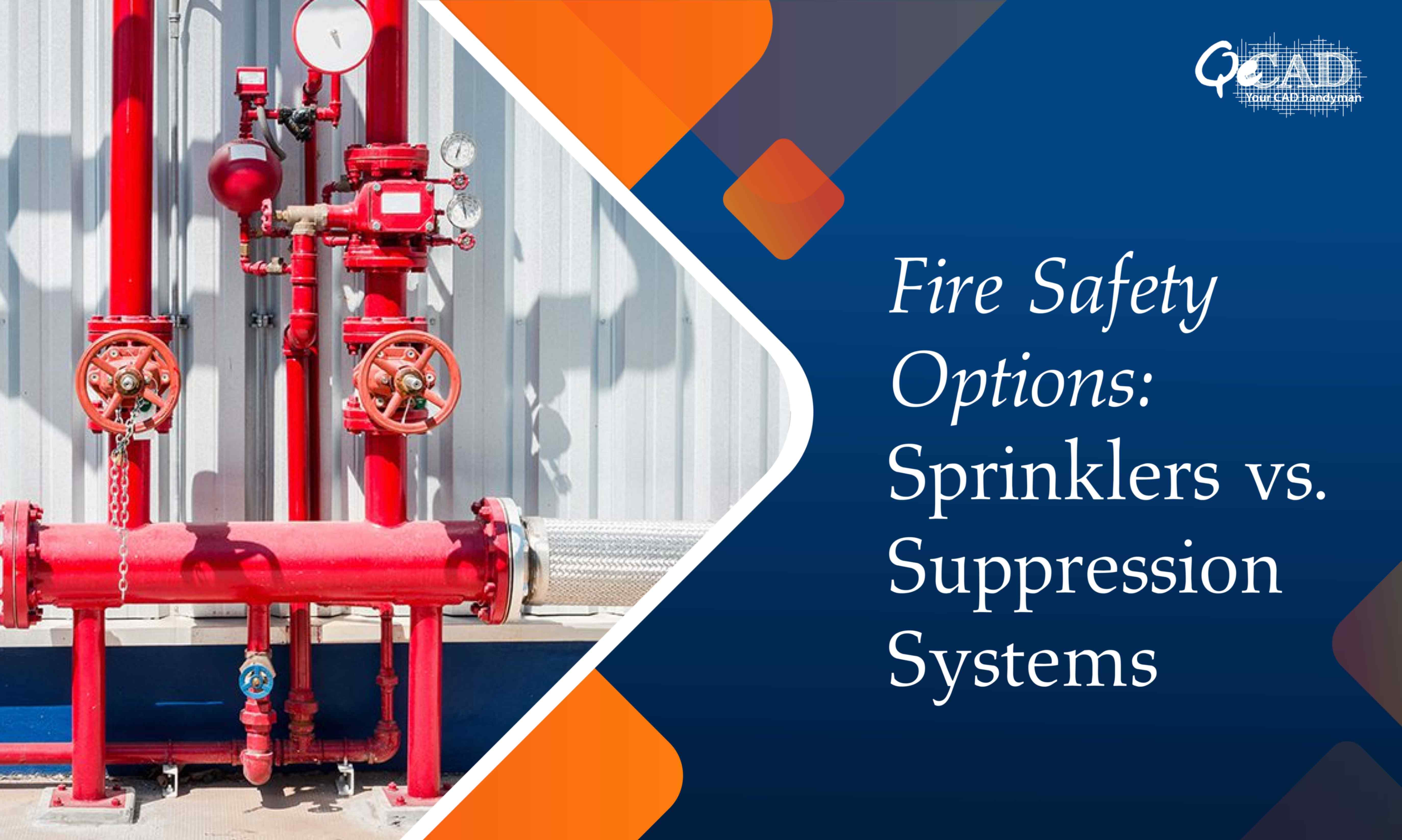
When it comes to protecting your facility from fire hazards, choosing the right MEPF Services is crucial. As this will help out in designing and placing the fire equipment/components effectively. Not only the services but even choosing for the right fire system is important. Two common system options are fire sprinklers and fire suppression. Both serve the essential purpose of fire safety, but they have different mechanisms, applications as well as benefits.
This blog will compare fire sprinklers and fire suppression systems in a detailed table helping you decide which is best for your specific needs.
Fire Sprinkler vs. Fire Suppression: A Comparison Table
| Criteria | Fire Sprinkler Systems | Fire Suppression Systems |
| Mechanism | Discharges water when heat activates the sprinkler head. | Uses various agents (gas, foam, or powder) to suppress fires. |
| Types | – Wet Pipe: Constantly filled with water. – Dry Pipe: Filled with air/nitrogen, activates when heat triggers the valve. – Pre-Action: Requires two triggers (heat and system activation). – Deluge: All sprinklers are open always; water ins only when activated; used in high-hazard areas. |
– Clean Agent Systems: Utilizes gases like FM-200 or Inergen, leaving no remnant. – Foam Systems: Efficient for flammable liquids; creates a barrier over the fuel. – Dry Chemical Systems: Releases powder agents to suppress fires. – Water Mist Systems: Employ fine water droplets to lower temperatures and reduce oxygen levels. |
| Best Suited For | General commercial buildings, warehouses, and residential spaces. | Specialized environments like data centers, kitchens, and museums. |
| Types of Fires | Effective for Class A (ordinary combustibles) fires. | Effective for Class B (flammable liquids), Class C (electrical), and Class K (cooking oils). |
| Installation Cost | Generally lower initial installation cost. | Typically, higher due to specialized equipment and installation. |
| Maintenance | Requires regular inspection and testing; relatively straightforward. | May require specialized technicians for inspection and maintenance. |
| Water Damage | Can cause significant water damage during activation. | Minimizes water damage; some systems leave no residue. |
| Response Time | Quick response; activation can take seconds after heat detection. | Immediate suppression; can often control the fire before it spreads. |
| Compliance & Codes | Generally, meets local fire codes for most buildings. | Additional compliance requirements may apply depending on the suppression agent utilized. |
| Environmental Impact | Water usage can be substantial; may contribute to runoff. | Some agents can be more environmentally friendly, depending on the type. |
| Training Requirements | Basic training for facility staff on operation and maintenance. | More extensive training may be needed, particularly for specialized systems. |
Conclusion
Choosing between a fire sprinkler system and a fire suppression system ultimately depends on the particular requirements of your facility. This can be decided while the initial planning or designing stage using apt MEPF Drafting Services.
The fire sprinklers are often suitable for the general fire protection in various settings whereas the fire suppression systems provide specialized solutions for unique hazards. Consider all the factors such as the type of materials present, potential fire risks, installation as well as maintenance costs along with the compliance requirements when making your decision.
Consulting with a fire safety professional can further ensure that your choice aligns well with the local regulations and the specific needs of your facility. This leads to a more safer space for all. The right fire protection system not only safeguards the property but also protects lives thereby making it a critical component of your overall MEPF strategy.
